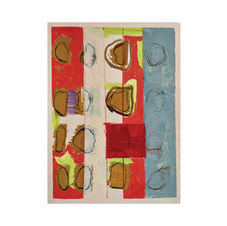Q3 Career/Connection RVArt Talk Interviews:
KCB Medical Illustrator - https://youtu.be/5STkmlJZdhc
Kaitlyn interviewed Michael Harvarnek, medical art illustrator, majors in arts and has a minor in psychology, biology, physics and philosophy. Biology is a requirement for an art medical graduate. He got his master's in medical illustration. During art education people were learning how to draw anatomy, now there is a commercial demand for medicine and molecules of their bonds. Additionally, he is competing with other illustrators, but luckily he has an archive of anatomy references. He also struggles with clients demanding a fast turnaround time to produce artwork. Compared to school, he needs to make tight deadlines and make enough money to support himself. There is an emphasis on succeeding to be an art illustrator because some people possess a style of art and those who wait by the phone to start their process. I was surprised to understand that 80% of medical illustrators struggle with sustaining themselves while making medical illustration their full-time career. This percentage was quite high because this job is not always a steady stream of income to support some lifestyles. I heard about this profession a year ago and was initially curious; I’m glad that I could get a first-hand account of a medical illustrator.
RVArt Talk- Diego Sanchez - https://youtu.be/u1BKRH8Nfbw
Mallory French interviewed Diego Sanchez, a local Richmond artist, who majored in printmaking at VCU. During his artistic process, he explored his cultural identity. Most of his artworks involve objective art showcasing hammers and household objects that represent meaning. Overall, he enjoys the process more than the final product. For 7-8 years it was more representational by using concrete geometric objects; he then tried abstraction. During the pandemic he had a shift in his art collection into a more meditative place to center himself. Additionally he enjoys looking at his work before starting his day to make decisions and to keep himself from overworking a piece. Sanchez’s process of playing with his watercolors and oils for fun is key to making his artwork. Additionally, his mention of work life balance is another key takeaway because he mentions self-discipline which aids in him producing artwork a couple hours before work. Even just time in his studio initiates his artistic process. Overall, I enjoy looking at his artwork and it reminds me of my friend’s similar artwork. I’m surprised his first formal art class was during his junior year of high school.





